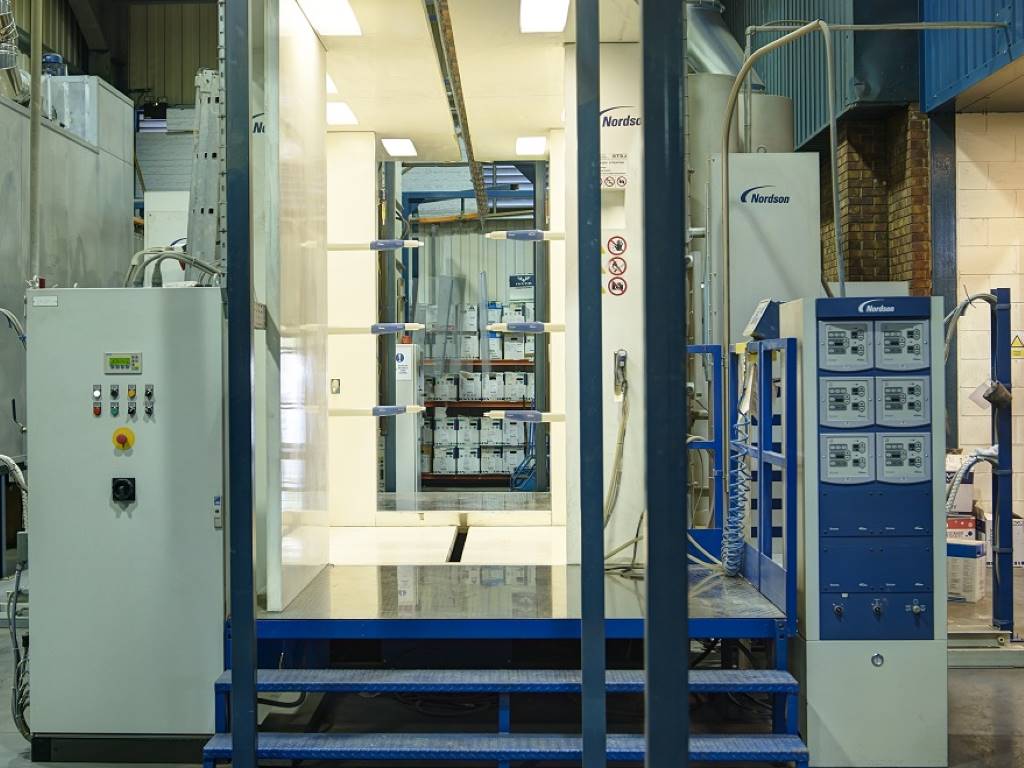High speed CNC software solutions
HySpeed explains how Alphacam is helping to simulates and visualises the company's production of aerospace parts on its busy machine shop.
After many years of focusing on repeat aircraft business, an engineering subcontractor has now become part of a larger group and is looking to incorporate the Alphacam CNC software it uses into other companies within the group. HySpeed (CNC) use Vero Software's Alphacam CNC software as both its CAD system and for creating NC toolpath code to drive 29 machining and turning centres from 12 different manufacturers at the company's 28,000ft2 premises in West Sussex. Full 3D simulation and visualisation of parts for machining is an important aspect of how HySpeed use the software to ensure the designed parts are fully machinable without any collisions. Originally set up in 1994 by Gary Francis and Leigh Hunter with two other directors, HySpeed is now part of the Universal Steels and Aluminium Group. Sum of the parts A large part of their business is to manufacture structural fuselage, wing and undercarriage components for companies within the aerospace industry. Production engineer Leigh Hunter says all parts they manufacture – both prototypes and repeats – are produced through Alphacam. “We use it for conversion from paper drawings or models, through to production of the toolpaths,” he begins. “Where customers supply designs as paper drawings we redraw the geometry as a 2D image in Alphacam – we don't need any other CAD system.” Electronic files, such as DXF for 2D, and IGES for 3D, are imported directly into Alphacam. “We're also getting more CATIA files nowadays, as they're becoming the norm for the aerospace industry, and we get STEP files, too. But Alphacam easily imports all types of files,” he affirms. “Having the model means we can pass it on to our IMS co-ordinate measuring machines which use common data,” continues Hunter. “So however accurate the model is that's produced in Alphacam, that's how accurate the finished part will be.” Managing director Gary Francis says most of the company's machines are standardised with Fanuc controllers, and the Alphacam CNC code drives them all. “Once the dimensional checks have been carried out and the component has passed the ‘first-off' inspection, we can post process the programs for all the machines,” he explains. An automated array The bulk of its work is 4-axis, which Alphacam takes in its stride on their variety of Niigata, Kitamura, Quaser, Kiwa and Hitachi-Seiki horizontal machining centres; Hyundai, Kitamura, Yang Eagle and Kryle column-type centres; Mazak and Kitamura bridge-type centres; and Hyundai, Biglia and Colchester Harrison turning centres. It is currently on a learning curve for full 5-axis work with a Bridgeport VMC600 which has a Heidenhain controller. HySpeed will shortly be taking delivery of a Doosan Puma MX2600ST 6-axis Mill/turn centre, and will be using new post-processors to incorporate this into the company. “Using Alphacam brings substantial benefits in terms of saving time on programming, and the accuracy of the toolpaths,” adds Hunter. “Once the CNC codes have been created in the office they are transferred to the shopfloor in ISO format, and I supply them to the tooling and setting sheets for the setter to pull the program and prove the part out. Francis says: “The part is set up on the machine tool, all the datum is carried out and entered into the first part of the program, then the setter runs through what's been produced in Alphacam. Offline programming is particularly valuable as we can keep the machines cutting while programming them in the background for another job.” The machine shop opens at 7.30am on Monday mornings and operates round the clock until 4pm on Friday. Most machines run all the time during the day, with a smaller number through the night, depending on requirements. Along with around 300 repeat parts produced all the time, they currently create between one and ten prototypes every week, working with a wide variety of metals. While the repeat orders for aircraft fuselage parts are mainly for aluminium, they have recently moved into prototyping for other industry sectors, including drill components. This new work calls for stainless steel, inconel, ToughMet, titanium and alloy stainless steel – in particular ToughMet and stainless steel being used, due to their high anti-corrosion qualities. For new products manufactured from expensive, exotic materials, they will often use Alphacam to create the prototype in aluminium first, to confirm the method of manufacture. A permanent fixture As well as using Alphacam to create toolpaths the software is also instrumental in producing jigs. “The jigs are drawn out using the CAD function,” says Hunter. “By producing them along with either the electronic or paper drawing, the component can easily be overlaid so we can be sure it will fit properly on the fixture.” Francis says that with around 15 years' experience of Alphacam, they are perfectly placed to recommend the software to other companies in the Universal Steels and Aluminium Group. Some sister products are already in use within the group; Radan is used in the sheetmetal divisions where the nesting feature is invaluable. “Other companies within the group are looking to use Alphacam; where we have migrated to server seats at HySpeed this gives more flexibility, and if required can be accessed from other sites throughout the Group. Or we can increase the number of ordinary seats. Either way, we're hoping to roll Alphacam out to the other companies, making it a standard within the Group.” www.vero-software.com www.hyspeed.co.uk












